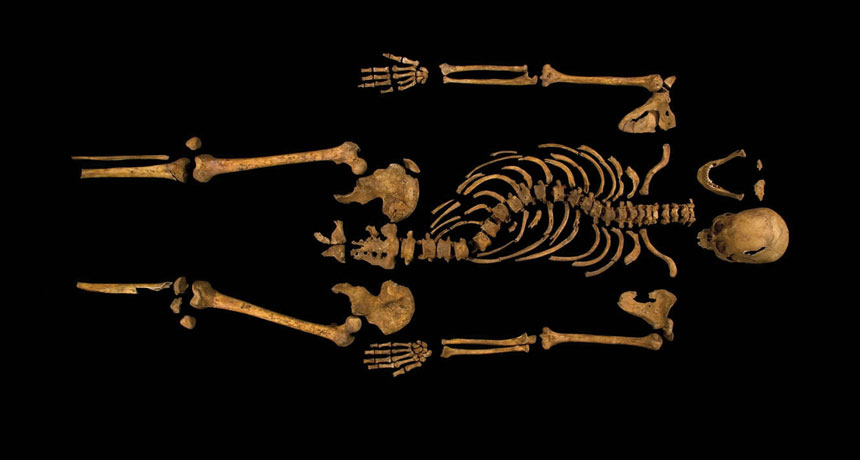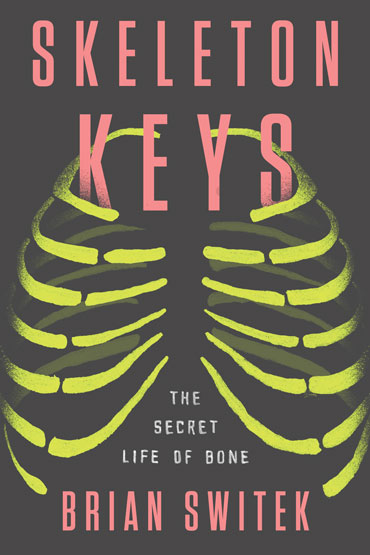‘Skeleton Keys’ unlocks the history and mysteries of bones
A self-described ‘fossil fanatic’ surveys science and culture

BONE UP King Richard III’s bones reveal much about the English monarch’s life and death.
Univ. of Leicester
 Skeleton Keys
Skeleton Keys
Brian Switek
Riverhead Books, $26
At this very moment, voracious cells are eating away at your bones. Not to worry, though — that’s just a normal part of bone maintenance in healthy adults. The formation of new bone cells balances out the removal of old bone cells. Although bone-making cells rev up when a bone breaks or disease sets in, eventually bone-eating cells kick in to make sure a bone doesn’t grow out of control. Bones as active tissues, not fixed structures, is just one of the fascinating topics that writer Brian Switek explores in Skeleton Keys.
The microscopic structure of our bones isn’t the only thing that changes throughout our lives; the number of bones changes too. Humans are born with about 270 bones that over the course of our youth and adolescence grow and fuse into 206 bones, give or take a few. And while some of those bones can provide clear evidence of whether a person was male or female, there are, contrary to what we see in many crime dramas, no anatomical characteristics that conclusively indicate a person’s race or country of origin.
Beyond basic biology and modern forensics, Skeleton Keys chronicles bone through the ages, from the origins of the precursor of bone in fish more than 450 million years ago to the role of bone in modern paleontology and anthropology. Here, Switek, a self-described “fossil fanatic” who has written three books about fossils (SN: 9/5/15, p. 28; 5/4/13, p. 34; 1/1/11, p. 34), puts his expertise to work. As he explains, the physical size and shape of bones help scientists identify what type of creature once hosted those tissues, what the animal looked like and possibly how it moved. Bones are also biological time capsules, often rife with chemical clues that can reveal what an animal ate and where it may have lived as it was growing up.
The author packs a bevy of such facts into illustrative tales of famed skeletons. The bones of Lucy, a hominid that strolled across the Ethiopian landscape more than 3.3 million years ago, indicate that she was well-equipped for walking upright. The skeleton of England’s King Richard III — miraculously found and then unearthed from beneath a city parking lot in 2012 — betrays the abuse the king suffered during and after his death on a battlefield in 1485 (SN: 3/9/13, p. 14). Chemical analyses of his bones also chronicle the region where he grew up and the rich diet he consumed during his tumultuous two-year reign (SN: 9/20/14, p. 17).
A number of lesser-known skeletons, including that of anthropologist Grover Krantz, who donated his and his dog’s skeletons to the Smithsonian Institution, where they were displayed, pepper this wonderfully engaging read.
Buy Skeleton Keys from Amazon.com. Science News is a participant in the Amazon Services LLC Associates Program. Please see our FAQ for more details.






